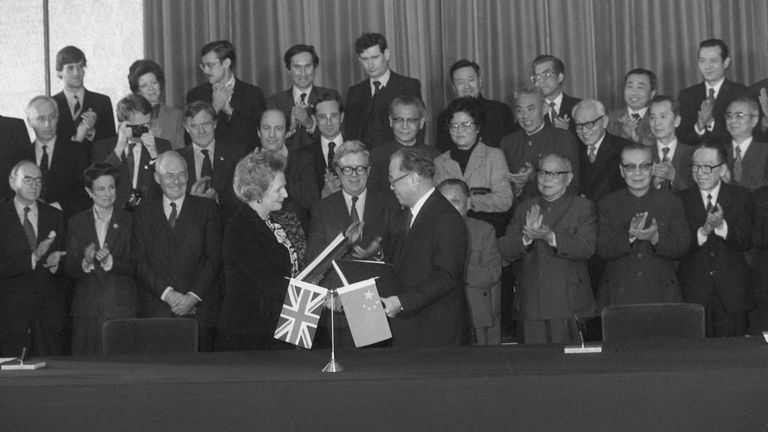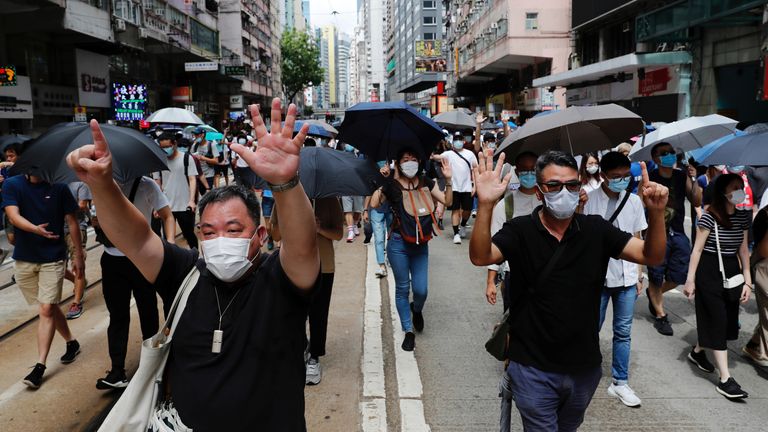Hong Kong: The Sino-British joint declaration explained
What is the declaration over Hong Kong signed by China and the UK and is it legally binding?
Wednesday 1 July 2020 19:30, UK
The UK has accused China of breaking the 1984 Sino-British joint declaration by imposing a new national security law on Hong Kong.
Britain handed Hong Kong back to China - which had originally ceded part of the city to the UK in 1842 after the first Opium War - on 1 July 1997.
In 1898 the UK obtained the New Territories, on Hong Kong's border with the mainland, and China leased the whole of Hong Kong to the UK for 99 years.
In preparation for the return of Hong Kong to China in 1997, then-British prime minister Margaret Thatcher and Chinese premier Zhao Ziyang signed the Sino-British Joint Declaration on the Question of Hong Kong in 1984.
What does the declaration say?
One Country, Two systems.
Although not the wording used in the declaration - but widely used to describe the system - the "one country" principle underpins the right of Hong Kong to be directly under the authority of Beijing.
"Two systems" refers to an agreement that Hong Kong would enjoy a "high degree of autonomy", with its social and economic systems and lifestyle unchanged for 50 years from 1997 - until 2047.
The government and independent legal system, including final adjudication, were to remain "basically unchanged" and China would only have authority over defence and foreign affairs.
Is the declaration legally binding?
The agreement was registered at the United Nations by the Chinese and British governments in June 1985.
What the UK says:
The British government sees it as "a legally binding treaty, registered with the United Nations, which continues to remain in force".
"It remains as valid today as it did when it was signed over 30 years ago," the Foreign Office has said repeatedly over the past few years.
Britain's foreign secretary has reported to parliament every six months since the handover on the implementation of the joint declaration.
What China says:
China has taken a different view in recent years, branding the declaration an "historic document" - and not a legally binding treaty.
After 20 years of generally adhering to the declaration, Chinese foreign ministry officials started suggesting in 2017 that the arrangement was "now history".
It said it was "ridiculous for the UK to pose itself as a supervisor on Hong Kong affairs" after the UK expressed concerns over the police response to protests in the summer of 2019.
China said anything to do with Hong Kong is "purely China's internal affairs", while the Chinese ambassador to the UK accused the UK of "interfering" in China's affairs in Hong Kong.
Is the declaration protected by international law?
Although it was registered with the UN, the declaration does not contain any provisions to enforce or dispute it - just a promise made by China when Mr Zhao signed it in 1984.
Under the Vienna Convention on the Law of Treaties, which both the UK and China are party to, if a treaty is breached the only option is to suspend it.








